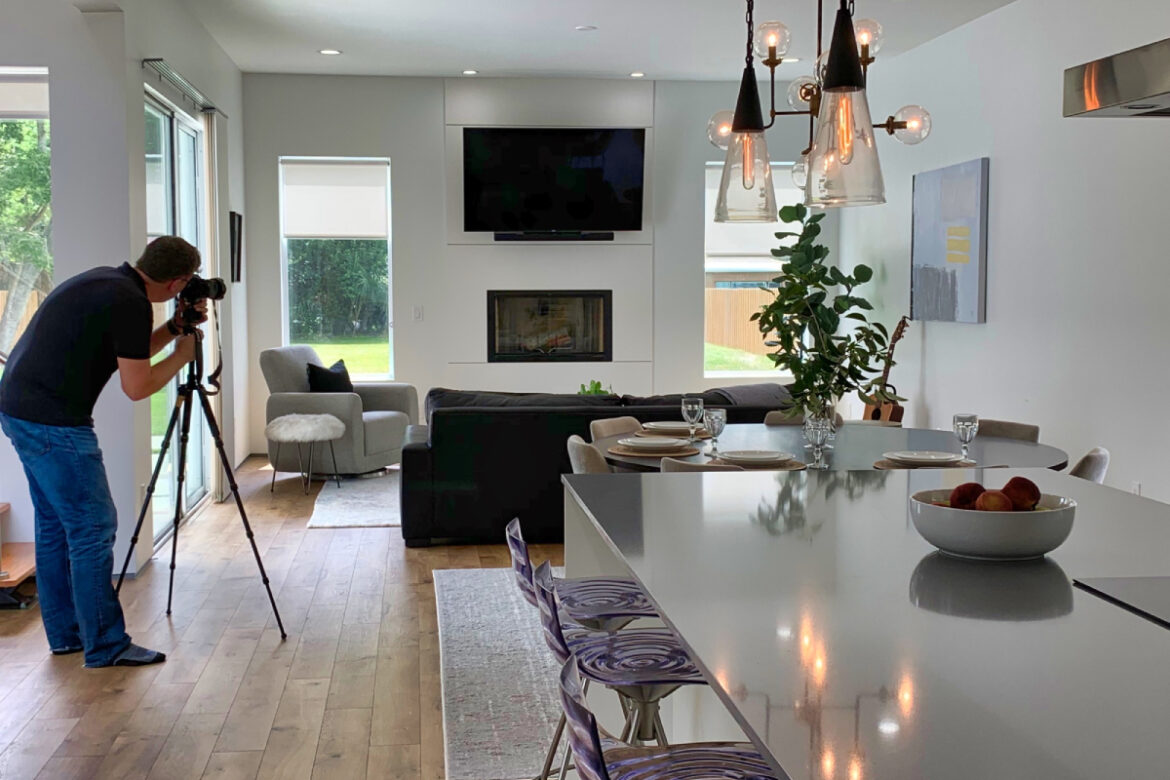Today’s real estate market highly depends on photography. From interior to exterior shots, aerial views, virtual tours, and twilight photography, various types of real estate photography can showcase a property’s unique features and attract potential buyers or tenants. Whether you are a homeowner or a broker, you must choose photography styles and techniques that highlight the unique features of your property and match the current market conditions. The most popular sorts of property photography are:
- Residential photography
- Interior photography
- Exterior photography
- Architectural photography
- Drone real estate photography
- Commercial real estate photography
- Real estate video tour
- Real estate virtual tour
- Twilight photography
This article will explore the different types of property photography and how they can be used to create a compelling marketing campaign. It will discuss their benefits, equipment requirements, and how they can be used to showcase a property’s strengths.
Table of Contents
Types of Real Estate Photography
Real estate photography isn’t just about taking pictures of a property. It involves a wide range of techniques and styles to capture a property’s unique features and showcase it in the best possible light. Different types of real estate photography serve different purposes, from interior and exterior shots to aerial views and virtual tours. Real estate photography includes:
- Residential photography
- Interior photography
- Exterior photography
- Architectural photography
- Drone real estate photography
- Commercial real estate photography
- Real estate video tour
- Real estate virtual tour
- Twilight photography
Before diving into each of these, let’s see what factors differentiate these types of photography styles to understand their differences better.
Differentiating Factors in Real Estate Photography
Real estate photography is an essential aspect of marketing properties, whether it is for sale or rent. A well-executed real estate photo can showcase the property’s best features and attract potential buyers or renters. However, taking great real estate photos requires carefully balancing several factors.
Lighting
Lighting is the most crucial factor in real estate photography. When photographing a property, natural light can give the photo the most natural and pleasing look. However, if the property has poor natural light or if you are taking pictures at night, it is essential to bring flash or external lights, depending on the situation.
Composition
The composition of a photo is how elements are arranged within the frame. In real estate photography, composition highlights the property’s best features. The rule of thirds is a helpful guideline when composing a photo. It involves dividing the frame into thirds, horizontally and vertically, and placing the subject along the lines or at their intersections.
Equipment
The equipment used for real estate photography can significantly impact the final result. A high-quality camera with a wide-angle lens, a tripod, external lighting, remote triggers, and polarizing filters are the leading equipment in this sector.
Timing
The timing of real estate photography is essential to capture the best lighting conditions. Natural light is best captured in the early morning or late afternoon, known as the golden hour. Additionally, the midday sun can cast unflattering shadows.
Post-Production
The final step in real estate photography is post-production editing. This involves adjusting elements such as exposure, contrast, and color balance to enhance the photo’s overall quality. While it is important to make necessary adjustments, it is also essential to avoid over-editing, which can result in unrealistic images.
Residential Photography
Residential photography involves capturing photographs of homes, apartments, condos, townhomes, single-family homes, and sometimes even multi-family buildings. The focus is on visually appealing images showcasing the property’s unique features and selling points. In a residential shoot, it is common for real estate photographers to provide around 20 to 30 edited images.
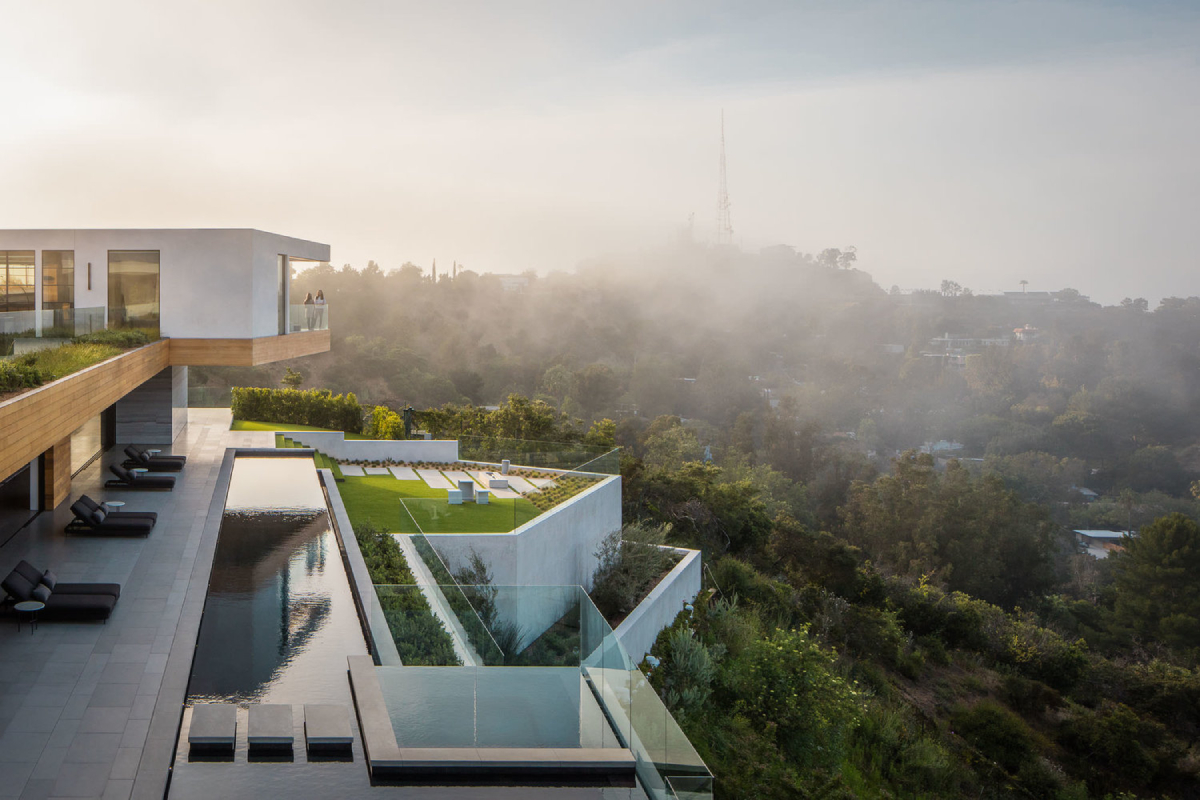
Main factors of residential photography
Exterior shots
Capturing the property’s exterior to showcase its curb appeal, landscaping, and surrounding environment.
Interior shots
Capturing the property’s interior to showcase its layout, design, and features.
Lighting
Using natural or artificial lighting to create mood and highlight design features.
Equipment
Using specialized equipment such as wide-angle lenses, tripods, DSLR cameras, and mirrorless cameras.
Post-processing
Adjusting color, brightness, sharpness, contrast and removing unwanted elements, straightening vertical lines, correcting color balance, and adding sharpness and clarity.
Benefits of residential photography
- Attracts more potential buyers/renters
- Helps stand out from the competition
- Improves representation of the property
- Speeds up sales/rentals
- Boosts sale/rental prices
Examples of residential photography
Front view of the house with landscaping
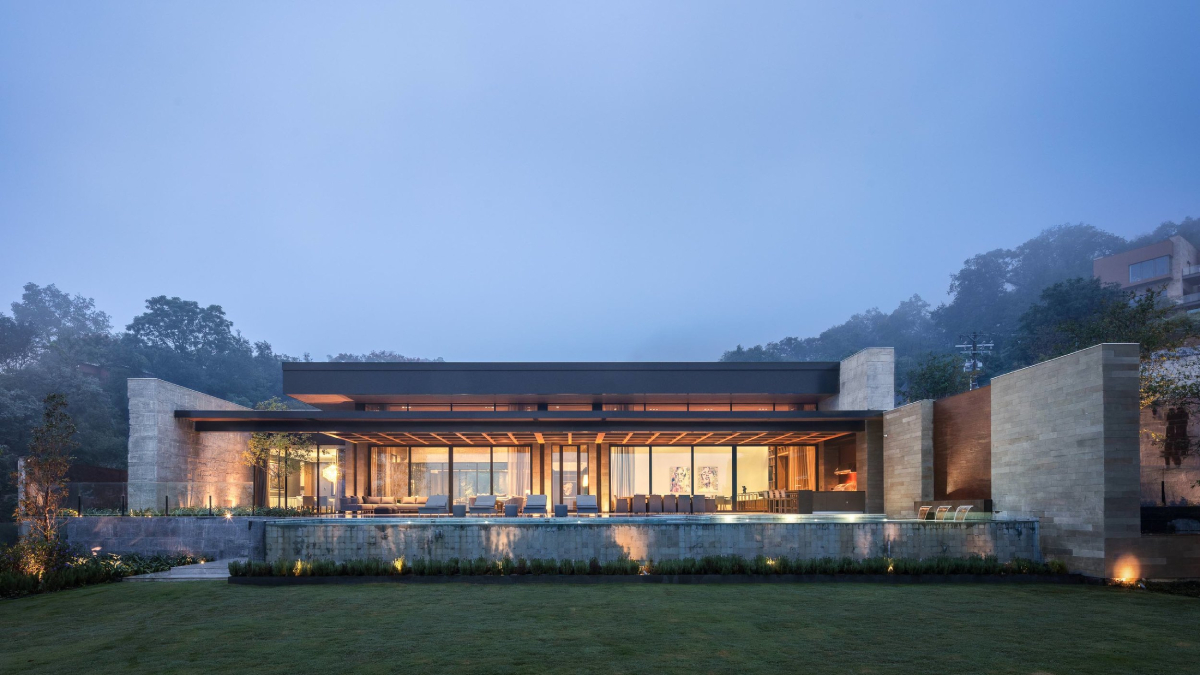
Photos of a living room with a fireplace and natural light
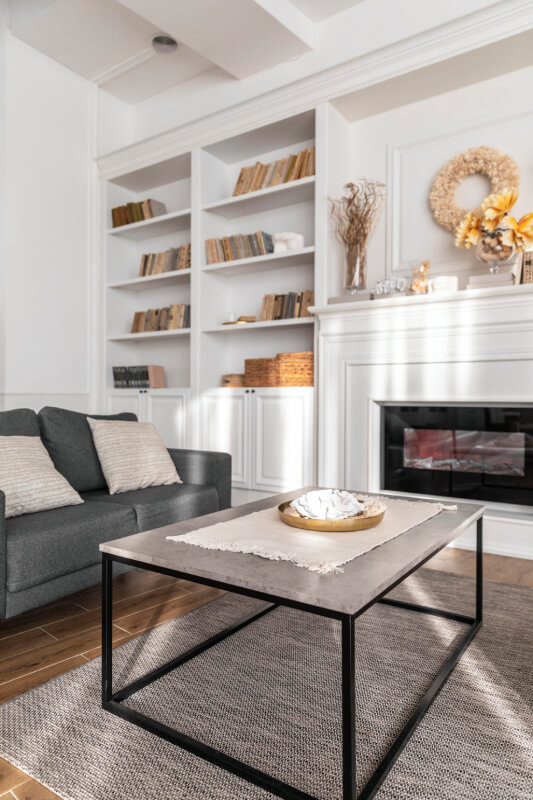
Photos of a kitchen with modern appliances
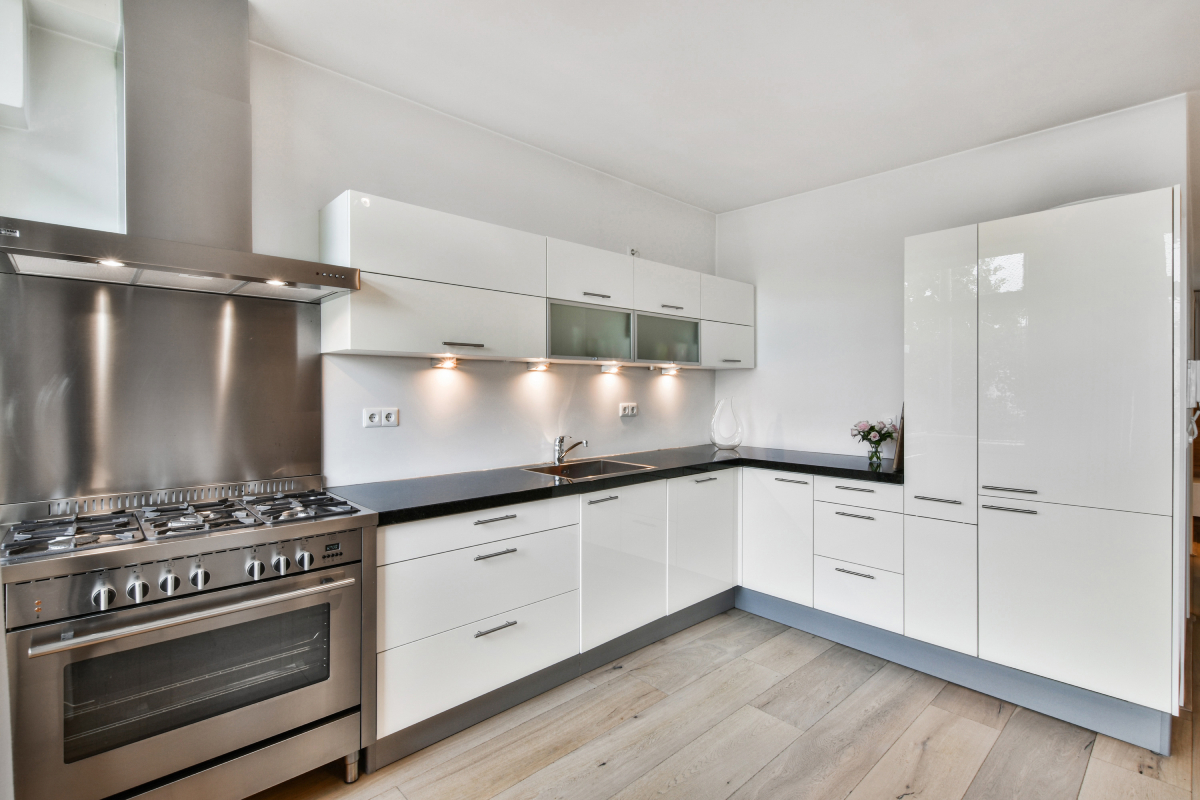
Set of photos of bedrooms with unique features like a balcony or large windows
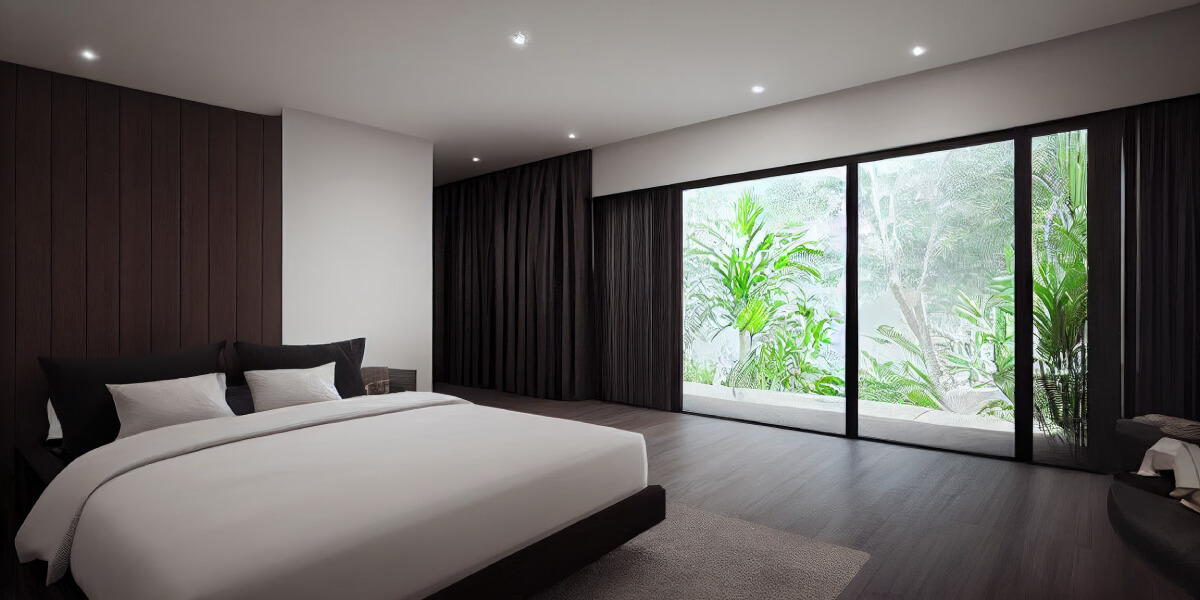
Photos of bathrooms with luxurious amenities like a spa tub or rain showerhead
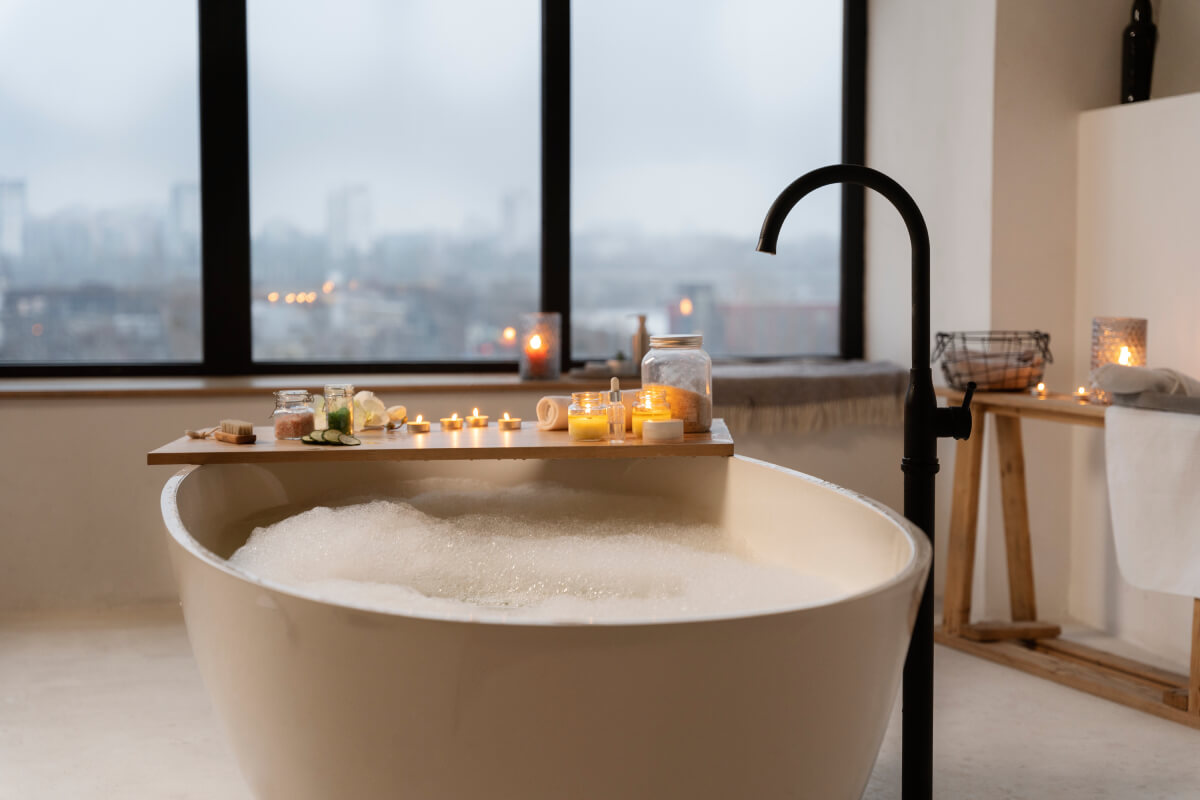
Interior Photography
Interior photography involves capturing photographs of indoor spaces, such as homes, offices, and commercial rooms. The focus is on creating visually appealing images that showcase the space’s unique design, features, and details.
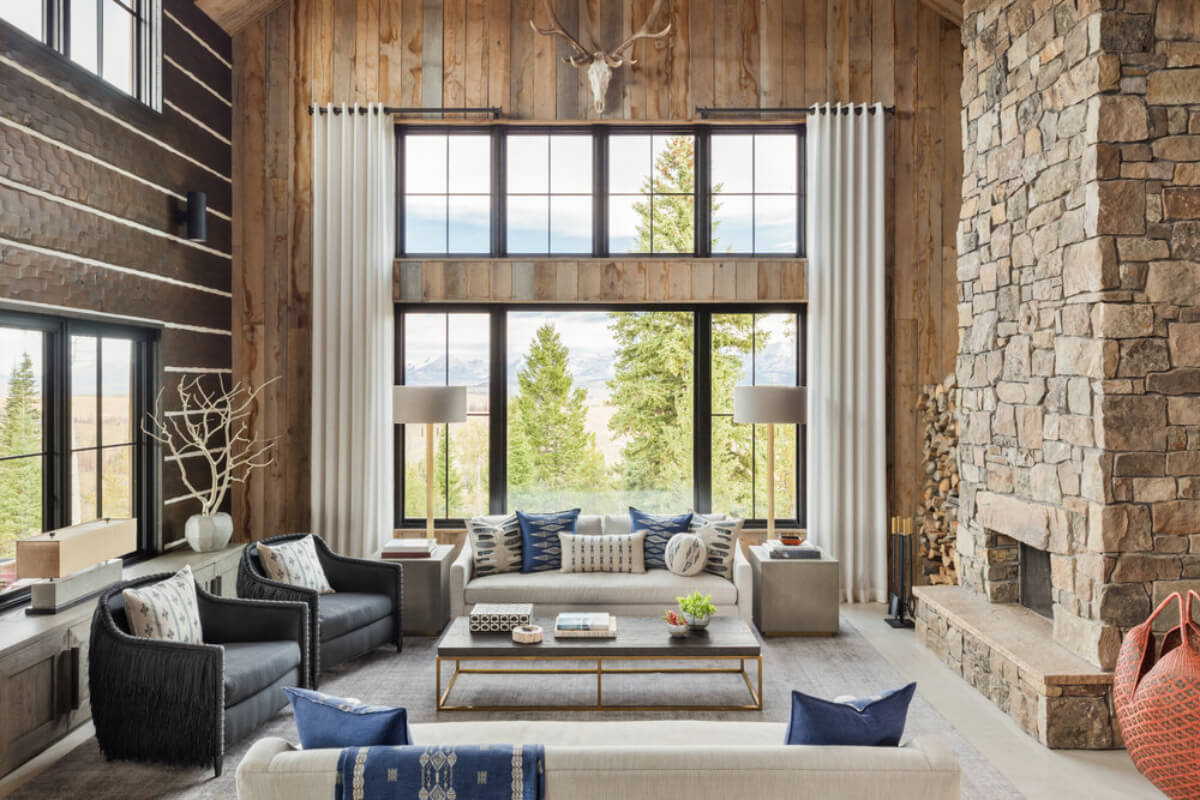
Main factors of interior photography
Lighting
Using natural light or flash and positioning the subject to take advantage of the light sources
Composition
Using techniques such as framing, leading lines, and symmetry to create visually appealing images.
Equipment
Using wide-angle lenses and tripods to capture the entire space and maintain sharpness and detail.
Post-processing
Adjusting color, brightness, and sharpness and removing any unwanted elements.
Consider the angle
Take photos from a lower angle or a higher angle.
Focus on details
Capturing exciting details, such as unique architectural features or stylish décor, creating a sense of warmth, coziness, or spaciousness.
Remove clutter
Removing clutter and unnecessary
Camera setting
Experimenting with different camera settings such as aperture, shutter speed, and ISO to achieve the desired effect.
Benefits of interior photography
- Improves real estate listings, hotel and restaurant promotions, and design portfolios.
- Showcases design
- Documents spaces before and after renovations
Examples of Interior photography:
Photos of a modern, stylish living room with comfortable furniture, vibrant colors, and a unique layout.
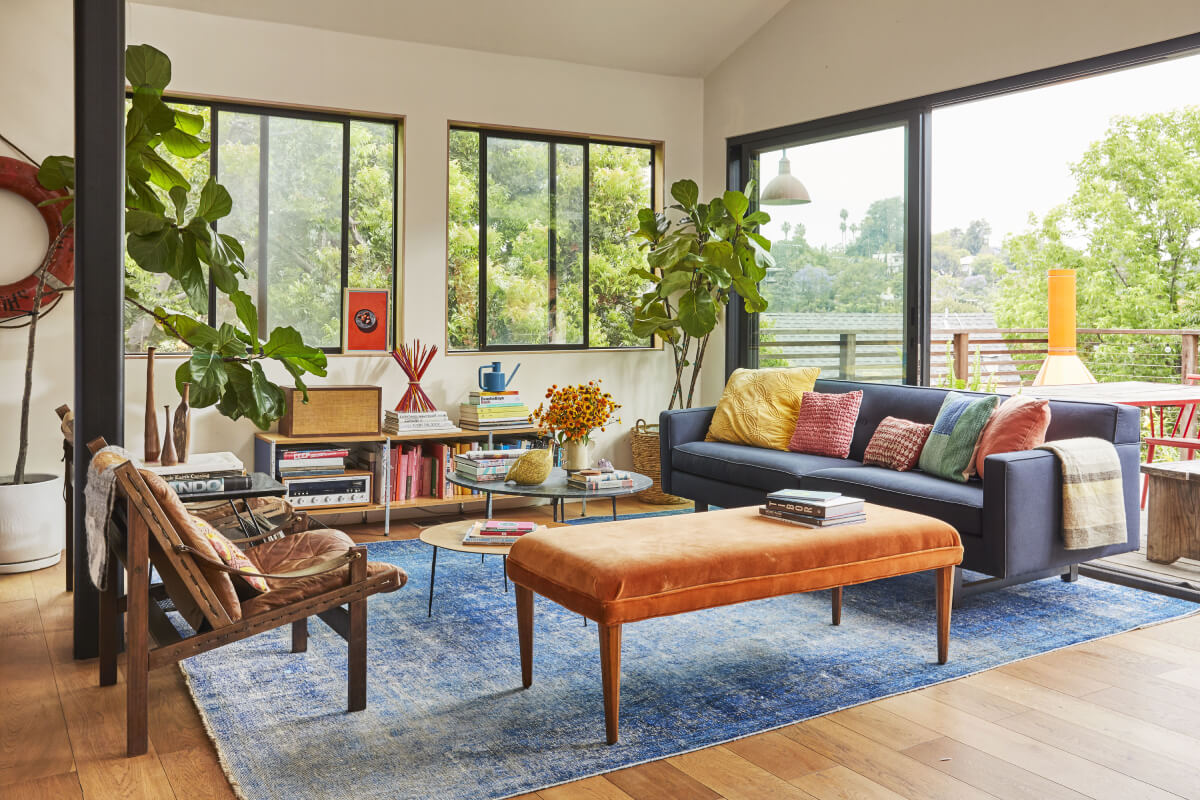
Photos of a bedroom with warm lighting, comfortable bedding, and decorative accents.
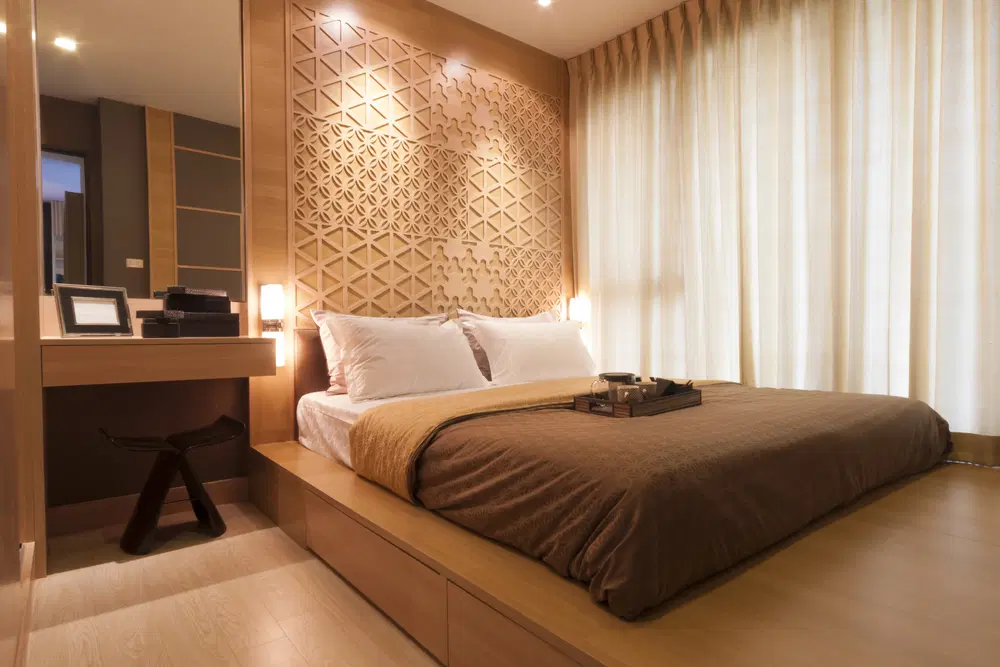
Set of photos of a kitchen with high-end appliances, sleek cabinetry, and a large island for cooking and dining.
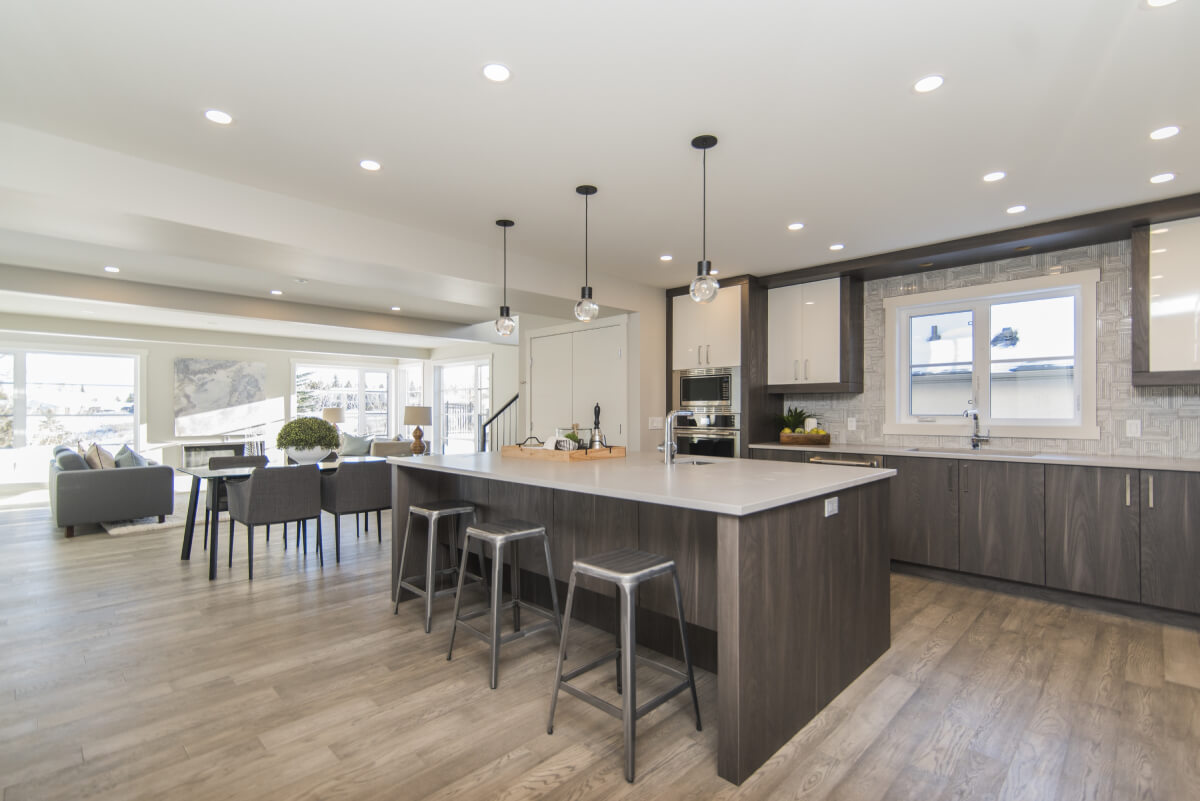
Photos of office space with natural lighting, stylish decor, and comfortable seating.
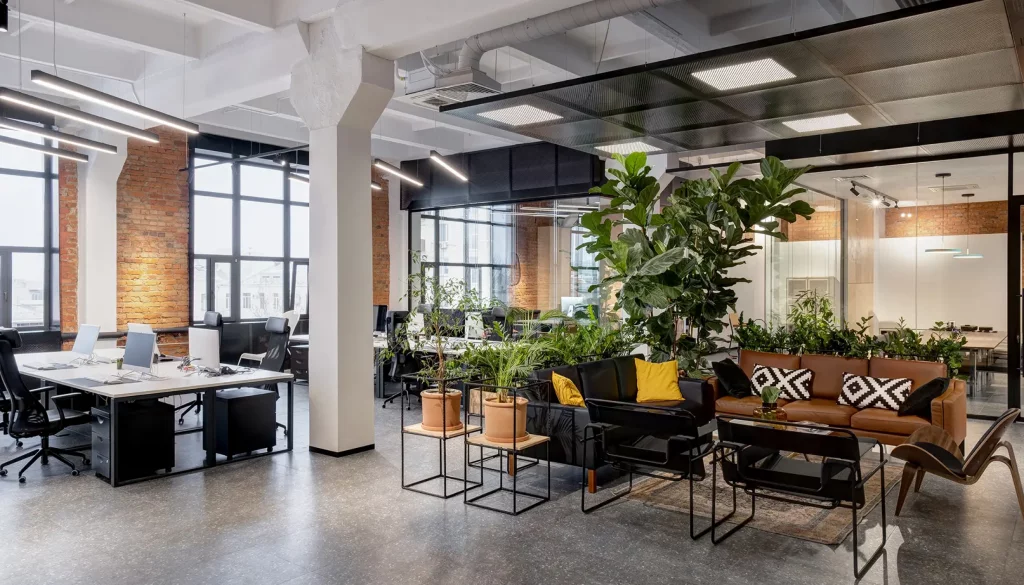
Interior photos of a spa room with soothing colors, soft lighting, and luxurious features such as a Jacuzzi or sauna.
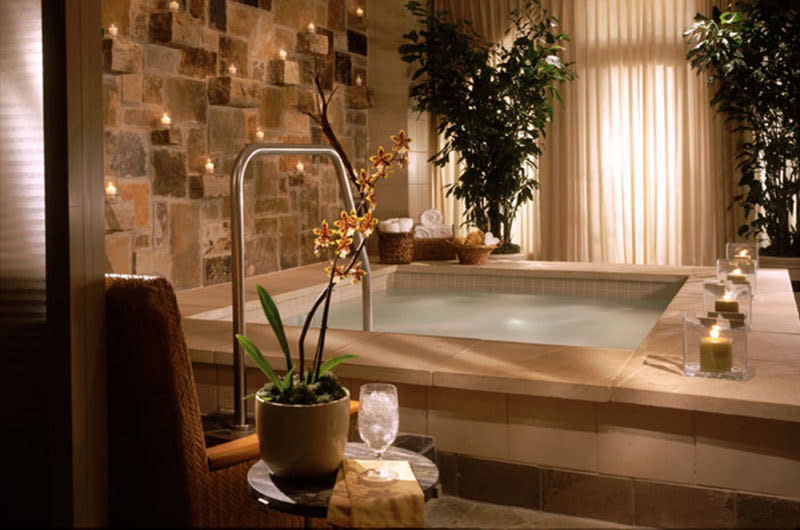
Exterior Photography
Exterior photography is the art of capturing images of the exterior of a building, such as a home, commercial building, or public space. This type of photography is often used in real estate, architecture, and tourism industries to showcase a property’s unique features and curb appeal.
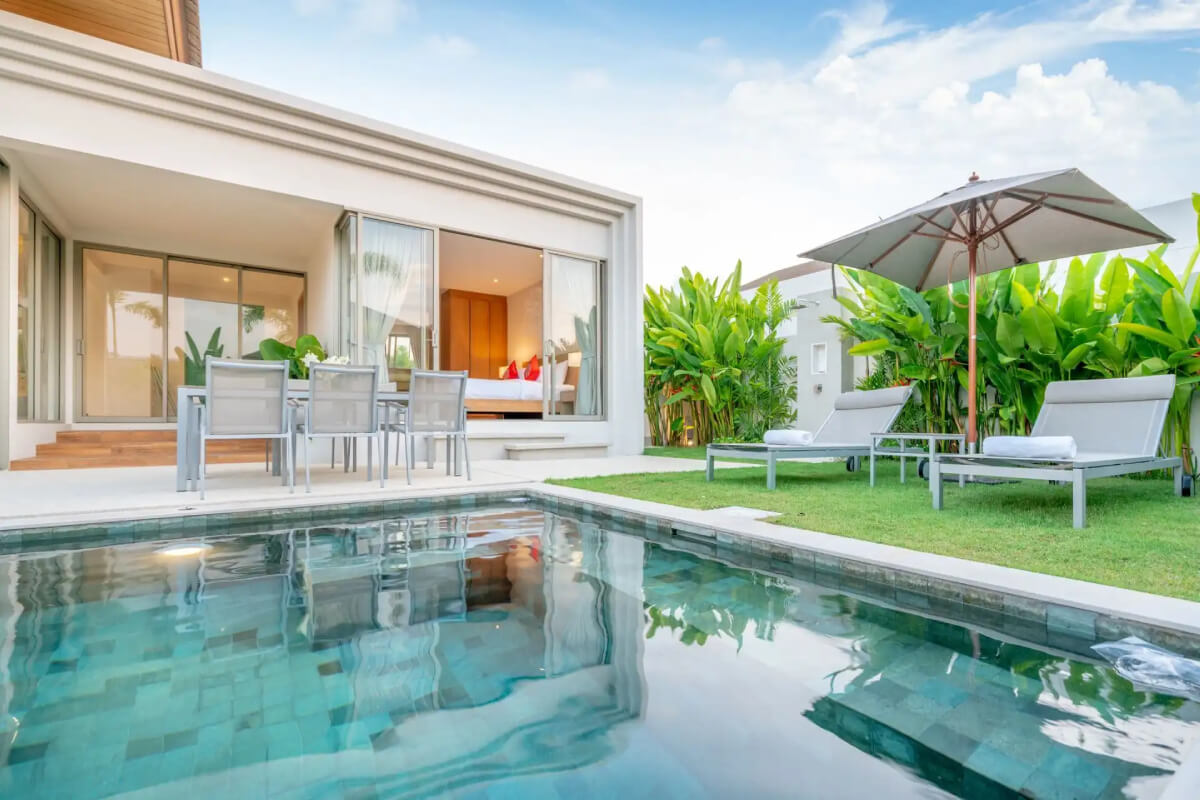
Main factors of exterior photography:
Lighting
Choosing the right time of day, like golden hour, and utilizing artificial lightings, such as flash or strobes, can provide a more evenly lit image.
Composition
Using composition techniques like the rule of thirds, leading lines, and symmetry to create a balanced and visually pleasing image.
Perspective
Using different perspectives, such as a low angle, high angle, or bird’s eye view, adds interest and conveys a specific mood.
The benefits of exterior photography
- Showcases the properties’ unique features
- Creates a good first impression
- Highlights the neighborhood
- Increases online visibility
- Attracts more potential buyers
Examples of exterior photography
Landscape photography
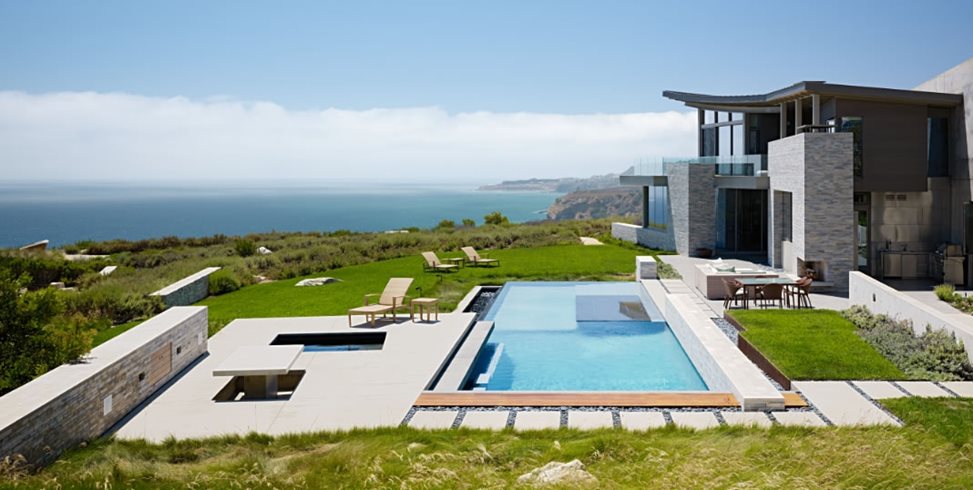
Photos of property features such as a swimming pool, outdoor kitchen, or fire pit
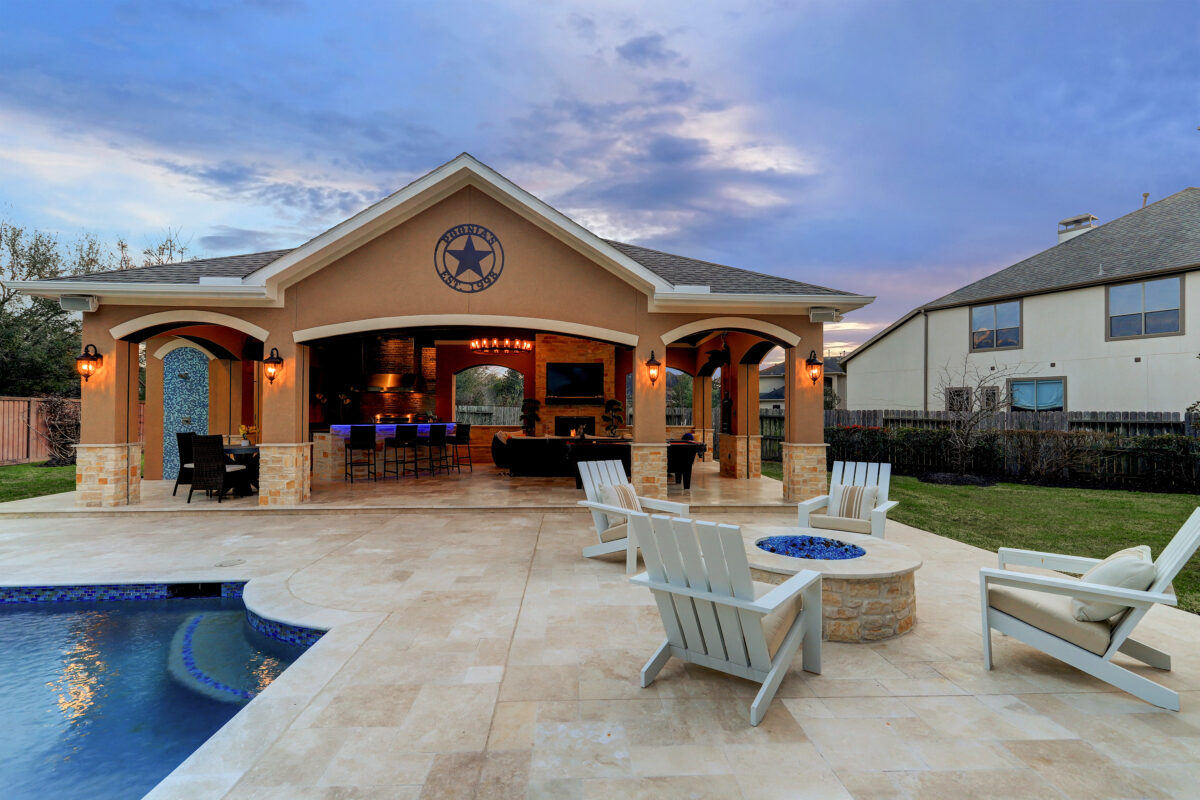
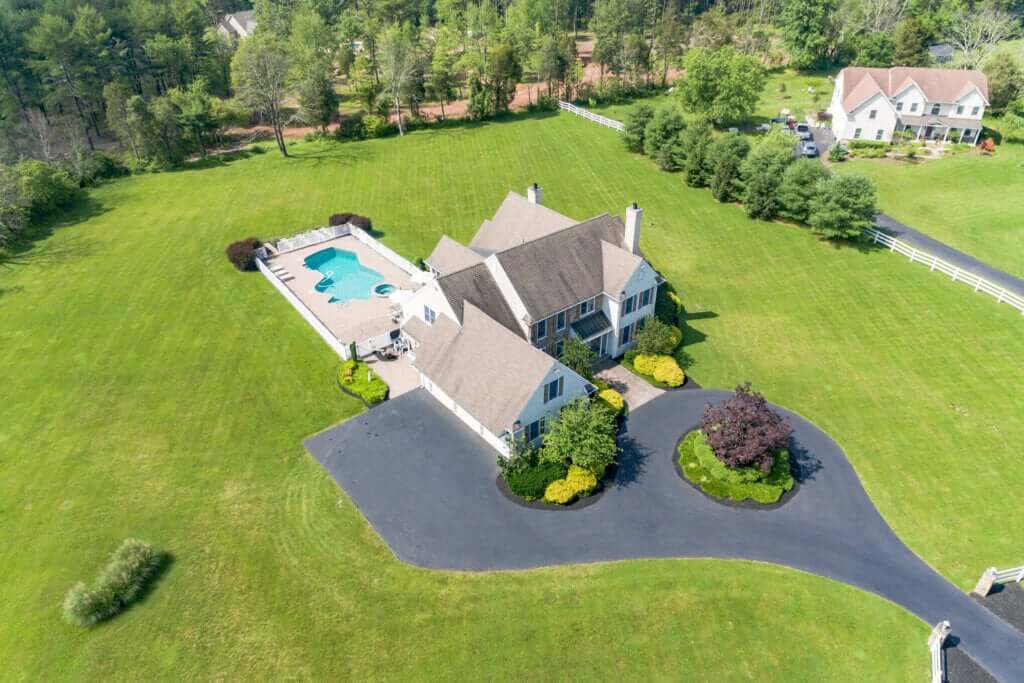
Street view photography

Seasonal photography
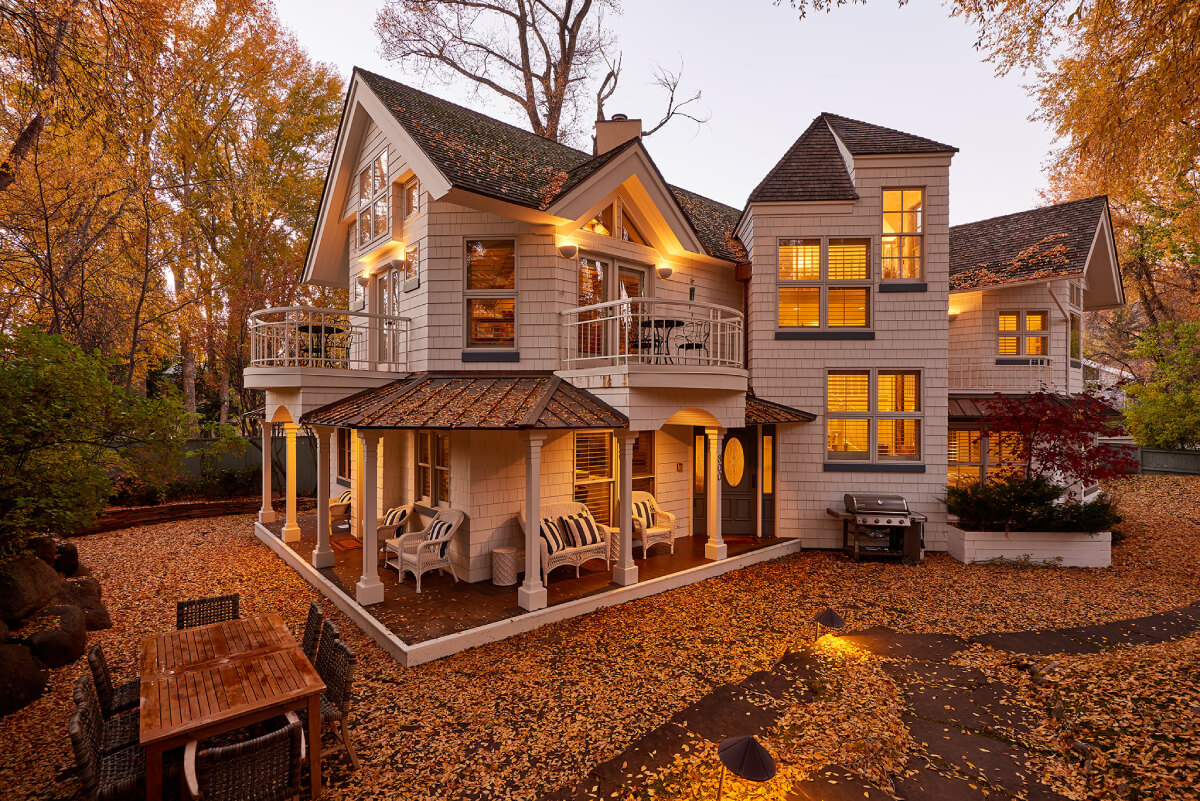
Architectural Photography
Architectural photography is the art of capturing images of buildings and structures to highlight their design, form, and function. Architects, designers, real estate agents, and other professionals often use it to showcase and promote their work. Architectural photographers use specialized techniques and equipment to capture buildings’ unique features and characteristics, including their lines, shapes, textures, and colors. The resulting images can be used in various contexts, such as advertising, marketing materials, publications, and art galleries.
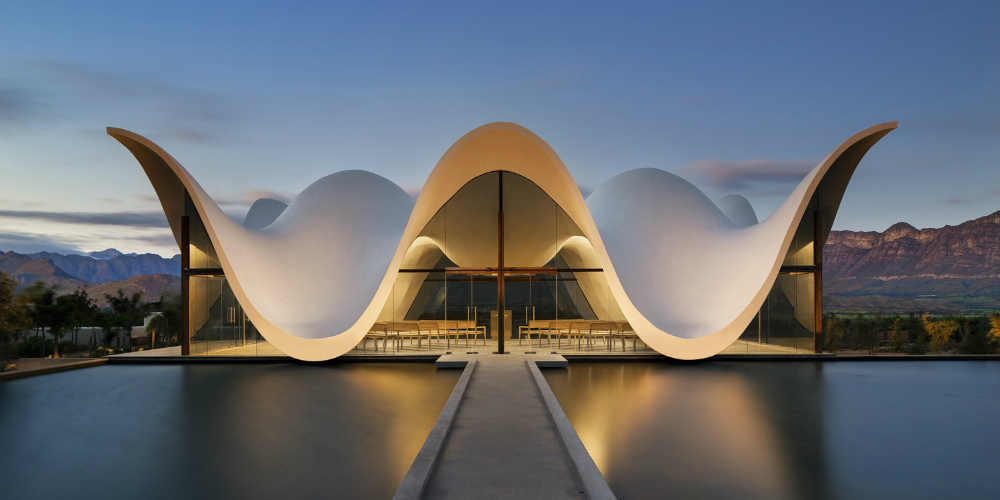
Main factors of architectural photography:
Composition
Arranging the elements of a photograph. In architectural photography, it’s essential to consider the building’s lines, angles, and symmetry to create a balanced and visually appealing image.
Lighting
Considering the time of day, weather conditions, and the direction of light to capture the building’s textures and details.
Perspective control
Using specialized lenses and techniques to ensure that vertical lines in the building appear parallel in the photograph rather than converging. This is particularly important when photographing tall buildings.
Post-processing
Correcting perspective distortion, adjusting exposure, and enhancing colors and textures.
Equipment
Using wide-angle lenses, tripods, tilt-shift lenses, filters, and strobes or reflectors to capture the building’s full scale and detail.
Timing
Shooting during the “golden hour,” the hour after sunrise or the hour before sunset, to capture warm, soft light that enhances the building’s features.
Benefits of architectural photography
- Showcases the design
- Enhances marketing and advertising efforts
- Documents building’s design and construction
- Increases property value
- Improves portfolio
Examples of architectural photography
Aerial shots of a luxury waterfront property
Exterior shots of a historic mansion
A commercial building’s lobby and common areas with a modern and sleek design.
A newly constructed apartment complex with spacious layouts.
A suburban home’s backyard and outdoor living space
Rustic cabin or cottage with a cozy and intimate atmosphere.
Drone Real Estate Photography
One of the modern types of real estate photography is drone photography which involves capturing photographs and videos from an aerial perspective using unmanned aerial vehicles (UAVs) or drones. The focus is on creating unique and visually stunning images that showcase properties, landscapes, and other features from a different perspective.
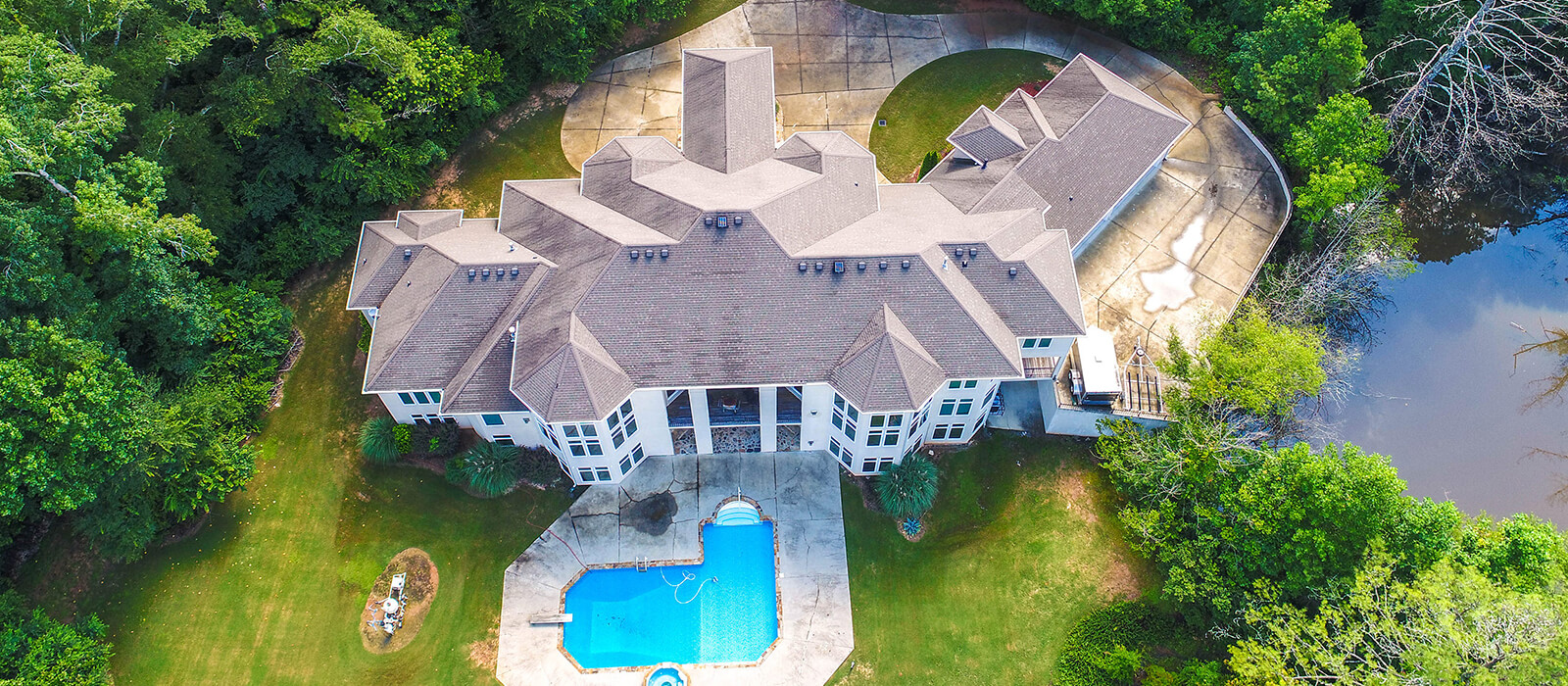
Main factors of real estate drone photography
Composition
Capturing the property and its surroundings from different angles, heights, and perspectives to create visually appealing images that showcase its features.
Camera settings
Adjusting camera settings such as exposure, shutter speed, and aperture.
Image stabilization
Using equipment such as gimbals to maintain a steady image while the drone is in motion.
Integration with other marketing materials
Integrating the images and footage into other marketing materials such as virtual tours, brochures, and websites
Post-processing: Adjusting color, brightness, and sharpness.
Benefits of real estate drone photography
- Creates unique perspective
- Shows advanced property features such as size, landscape, and proximity to other amenities.
- Provides a unique perspective of the property, highlighting its location, surroundings, and other features that cannot be seen from ground-level shots.
- Grabs potential buyers’ attention and increases the likelihood of a sale.
- Provides a comprehensive view of the property
- Saves time
- Reduces costs
- Provides versatility and flexibility
- Enhances the property’s marketing and advertising efforts
Examples of real estate drone photography
A video showcasing a property’s exterior features, such as its size, location, and surroundings.
A photo of a property’s landscaping, highlighting its features and natural elements.
A video tour of a property’s interior and exterior gives potential buyers or renters a comprehensive view of the property.
Commercial Real Estate Photography
Real estate commercial photography involves capturing images and videos of commercial properties such as offices, retail spaces, warehouses, and other business establishments. The focus is on showcasing the property’s features and amenities to attract potential tenants, investors, or buyers.
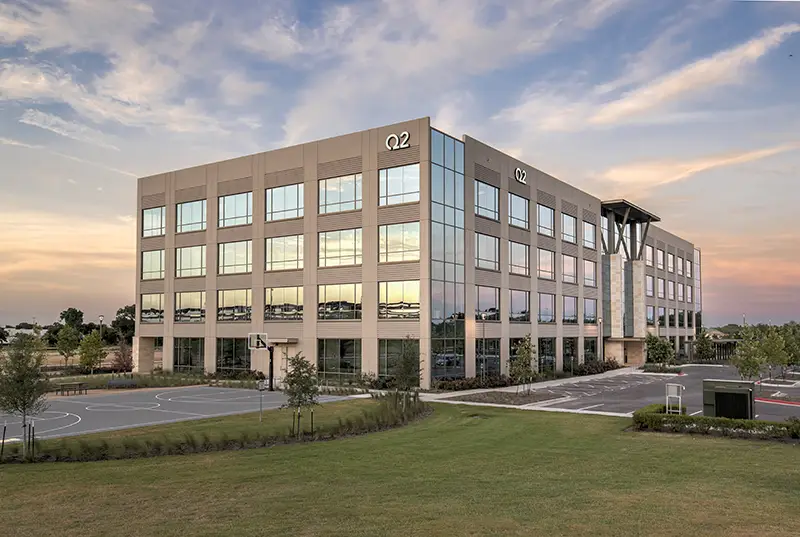
Main factors of commercial real estate photography
Lighting
Using various lighting techniques, such as natural light, artificial light, and a combination of both.
Composition
Using techniques such as framing, perspective, and balance to highlight the essential features of the property.
Angles
Using various angles to showcase the property from different perspectives, including high-angle shots to capture a bird’s eye view and low-angle photos to showcase the building’s height and grandeur.
Post-production
Editing colors, removing distractions or blemishes, and enhancing details.
Equipment
Using specialized equipment such as high-end cameras, wide-angle lenses, tripods, and drones.
Styling
Working with professional stylists to stage the property and arrange furniture and decor to create an attractive and inviting space.
Benefits of commercial real estate photography
- Creates a positive first impression
- Generates more interest and leads.
- Gives a property or business a competitive advantage
- Increases sales or bookings
- Reduces costs
- It is used in a range of marketing materials, from print and online advertising to brochures and social media posts
Examples of Commercial Real Estate Photography
Photos of the exterior and interior of the retail space.
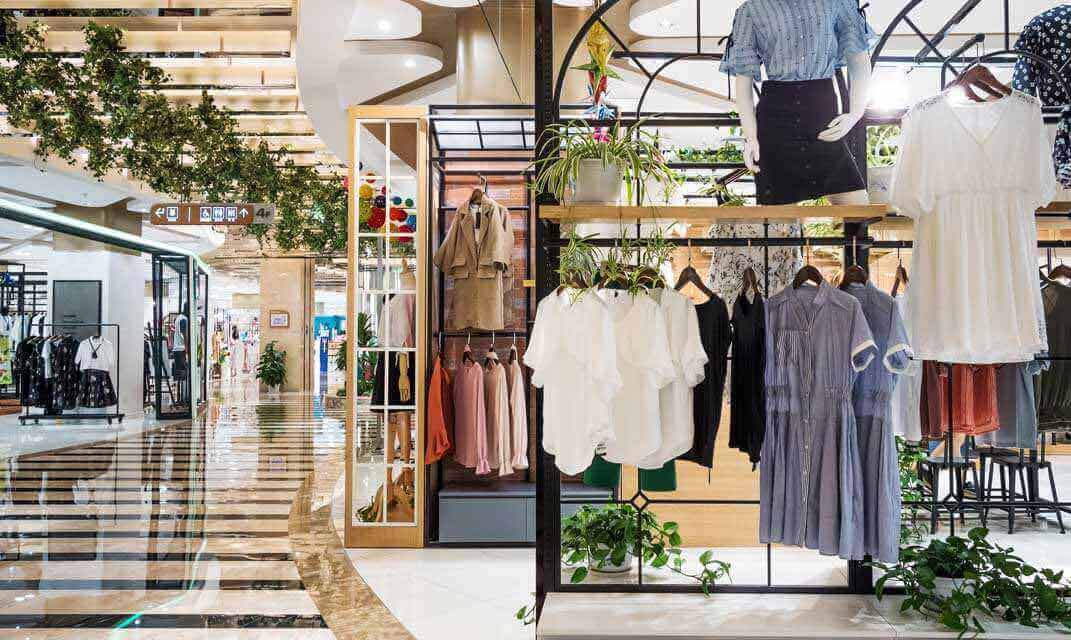
Photographs of an office building showcase its lobby, common areas, and individual office spaces.
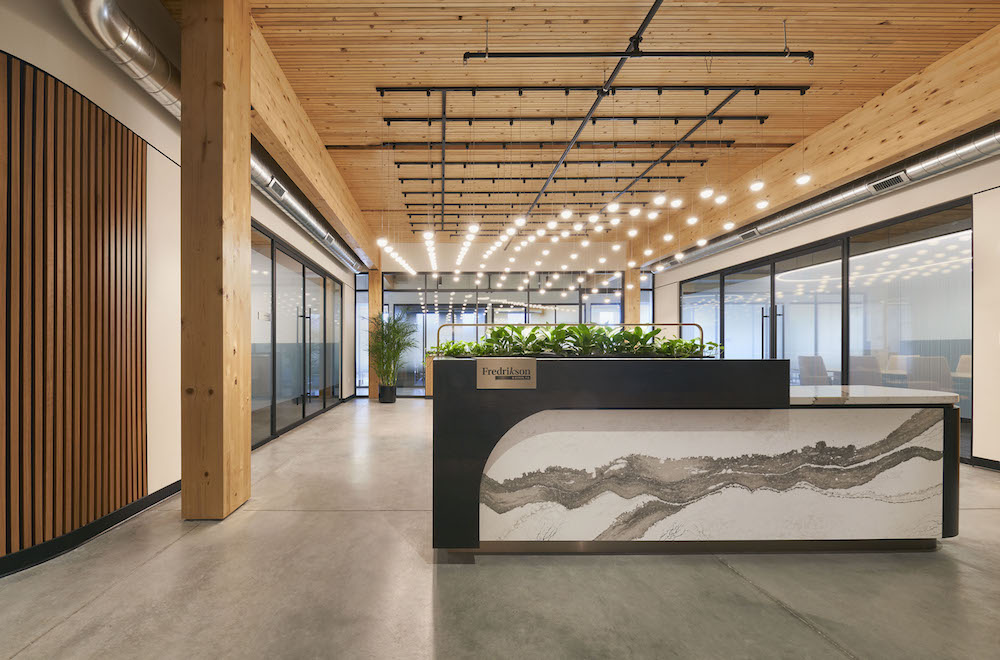
Photos of a hotel to highlight its amenities and luxurious atmosphere

Real Estate Video Tour
The video tour is a marketing strategy used in the real estate industry to showcase properties using video content. It involves creating a visual tour of the property, highlighting its features and amenities, and providing a sense of the space and layout. The video can be shared on various platforms, including social media, websites, and virtual tour platforms, to reach a wider audience and attract potential buyers or renters. It can include interior and exterior shots, commentary, and music to create a comprehensive and engaging tour of the property.
Main factors of real estate video tour
Equipment
Using DSLR or Mirrorless cameras, Point-and-shoot cameras, Action cameras, and drones.
Storytelling
Creating a narrative through commentary and visuals highlighting the property’s unique features and amenities.
Music
Selecting appropriate music complements the video and creates an engaging and memorable experience.
Editing
Enhancing the video’s visual appeal with proper software and techniques.
Benefits of real estate video tour
- Improves Engagement
- Increases Reach
- Provides convenience
- Enhances Marketing
- Increases sales
Examples of real estate video tours
A video tour of a luxury apartment building showcasing the property’s amenities, such as a rooftop pool and fitness center.
A video tour of a commercial property highlighting its layout and features, such as large windows and high ceilings.
A video tour of a suburban home showcasing its spacious backyard and updated kitchen.
Real Estate Virtual Tour
Real estate virtual tour photography involves creating a 360-degree immersive experience of a property, allowing potential buyers or renters to explore the property remotely as if they were physically present. It can include interior and exterior shots and can be accessed via a website or virtual tour platform.
Main factors of real estate virtual tour
Specialized cameras
Using digital cameras, DSLR or mirrorless cameras, and 360-degree cameras.
Virtual tour software
Stitching the images together and creating a seamless, interactive experience for users.
Navigation tools
Navigation tools such as arrows or a mini-map can be added to help users navigate through the virtual tour.
Optional features
Adding optional features such as pop-up information boxes or audio commentary to enhance the user experience.
Virtual staging: Using computer-generated furniture and decor to create a fully-furnished and visually appealing space.
Panoramic images
Stitching multiple photos to create a 360-degree view of a room or space.
Video walkthroughs
Make a video tour of the property that provides a comprehensive view of the entire space, highlighting key features and amenities.
Interactive floor plans
Creating a detailed floor plan allows users to click on various rooms or areas to see additional photos, information, and videos.
Benefits of real estate virtual tour
- Provides convenient
- Comprehensive
- Creates a memorable experience
- Reduces costs
- Saves time
Examples of real estate virtual tour photography
A virtual tour of a luxury condominium to explore the property’s stunning views and high-end finishes.
A virtual tour of a commercial property to show its layout and features, such as private offices and conference rooms.
A virtual tour of a historic home to explore its unique architecture and character.
Twilight Photography
Real estate twilight photography involves photos of a property during the “twilight” period, just after sunset or before sunrise. This technique can create a dramatic and visually appealing look for the property, with the sky appearing in shades of blue and purple while the lights are illuminated.
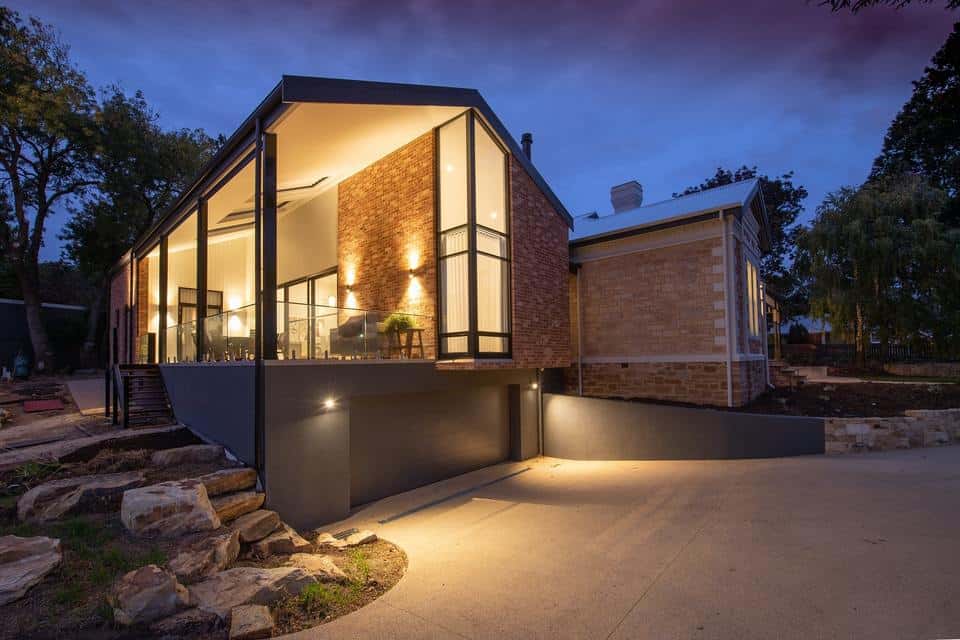
Main factors of twilight photography
Timing
Timing the shoot to capture the property during twilight. The ideal time to start the shoot is about 20-30 minutes after sunset, and the shoot should be completed within an hour.
Lighting
Using external lighting equipment such as flash or continuous lighting is necessary to balance the natural light and illuminate the property’s exterior. The photographer must also consider the placement of these lights to avoid harsh shadows or overexposure.
Equipment
Using professional cameras and equipment such as tripods, wide-angle lenses, filters, and cameras with high ISO capabilities.
Post-processing
Using software to bring out the warm tones and vibrant colors.
Composition
Choosing the right angle to showcase the property’s best features and capture the ambiance created by the warm glow of the sky and the illuminated property lights.
Benefits of twilight photography
- Creates visual appeal
- Makes emotional connection
- Creates competitive advantages
Examples of twilight photography
A shot of a modern mansion with city lights in the background
A shot of a cozy living room with a fireplace and warm lighting
A twilight shot of a luxurious pool and outdoor living area with colorful lights
A twilight shot of a high-rise building with a beautiful sunset in the background.


Looking for a fast-turning virtual twilight service at an unbeatable price?
Look no further! Click below to get started with Revivoto’s day to dusk.
Conclusion
Real estate photography is vital in marketing properties for sale or rent. The types of real estate photography include interior, architectural, drone, commercial, twilight, virtual tour, and exterior photography. By considering factors such as lighting, composition, equipment, timing, and post-production, real estate photographers can create stunning visual representations of a property that highlight its best features and make it stand out. Investing in professional real estate photography can result in faster sales, higher offers, and increased interest from potential buyers or renters. Ultimately, real estate photography is a powerful tool in real estate that can make a significant difference in a property’s success on the market.


